DIY turbo bike (and car) basic questions
Here I will get indepth in do's and don't's in the turbo bike (and car) area.
What *I* recommend, and what I don't recommend.
I am not the expert on this. I don't have an engineers degree. What you will find here is my *opinions* based off of my experiences with turbo'ing bikes, and trust me, you will find plenty of other opinions out there that don't agree with mine!
So take them as you will.
So lets start with some basics. First off, I only recommend blow-thru turbo setups. I won't even discuss draw-thru, because, frankly, they suck. They work well in drag racing, but I wouldn't recommend them for anything else, and honestly, I think a TRULY effective drag race bike would do better with blow-thru anyway. But in short, the reason I don't even discuss it is because draw-thru has poor drivability, poor cold start and poor fuel distribution across the cylinders. They make great peak numbers when everything is working correctly. Up to a point. But they have a lot of disadvantages.
Blow-thru is when the (typically) stock carbs are left in place, and the turbo is pressurizing the carbs. Draw thru is when you have a single carb mounted to the inlet of the turbo.....the carb is not pressurized.
Blow-thru's on the other hand, once set up properly, are flawless start
up, flawless cold start, flawless transition, and equal fueling across
the cylinders. In short it will act like a stock bike, but with twice
the power. Street application, it can't be beat.
Pitot tube
Now that I have that out of the way, lets jump straight to THE most common question I get. What is a Pitot tube? How do you set it up? What sizes do you use? Is it necessary?
Pitot tube is a tube within the charge pipe that acts as a reference to the incoming stream of air, and has an effect of increasing the pressure to the reference. Its an effective method, when using blow-thru carb setup, for improving fueling on boost.
Where does it go? It will go to the float bowl vents on a stock carberator bank. What it does is increase the pressure in the bowls, which thereby, pushes the fuel into the venturi. The more pressure, the more fuel flows into the venturi. This is how you can make the carbs compensate for the increased flow due to boost
Is it necessary? You could instead have a simple reference line coming off the air box, so that the bowl vents see unmodified boost pressure. This does work. But its not as effective. Using this method requires very large main jets, regardless to your carbs, and more importantly, its not as self-compensating for different boost levels. If you change from 5psi to 15psi, this method would require a huge jetting change. It would also cause a overly rich condition as you transition upto that 15psi peak. All in all, I've yet to read about anyone that has gone from this method to the pitot tube method, and not rave about the results. I suggest that is all the evidence you need on why you should use a pitot tube.
What IS a pitot tube?
There is actually a few ways of doing a pitot tube. One way is to have a tube pointing into the stream, in parallel with the pipe its within. The opening is pointing towards the incoming air flow. The other side exits outside of the pipe, and continue's on to the float vents. An example of it:
Another method is to put a tube perpindicular to the air flow, so that the tube has two outlets, one on each side of the pipe, and then inside the pipe, there's a reference hole drilled in it that accesses the incoming air flow. An example of it:
I haven't found a advantage or disadvantage to either method, and I've used both. I intuitively suggest that you use the former, only because blocks less of the path which makes it less of a restiction, and therefore a smaller pressure drop.
Pitot tube size?
But there is an added variable, and thats how big should the pitot tube
be?
Thats a VERY important question and can and will drastically effect your jetting.
I don't have an exact formula, but basically it works like this: the pitot tube acts as a restriction for the incoming air. The bigger the pitot, the bigger the pressure drop. The bigger the pressure drop, the higher the pressure reference at the pitot (and thereby the float bowls). Its a ratio that works out to be, for X cold pipe ID, and Y pitot tube OD = Z main jet.
Main jet is the only thing it effects. Doesn't effect the needle, or shouldn't, whether its a flat slide carb or a CV carb setup. This is purely for transitioning onto boost and during peak boost. Partial throttle will as always deal with the idle circuit and needle position just like it does without the turbo. All of my turbo systems end up having nearly identical idle jets and needles to stock. REGARDLESS to the size of the main jet, which is due to the size of the pitot tube
As far as just size vs pitot tube size, vs cold pipe size....like I said, I don't have an exact number. But heres some some suggestions: For every one inch of cold pipe diameter, I would recommend a 1/4" pitot tube OD. IE, if you have a two inch cold pipe, I'd make the pitot tube 1/2 inch. Its a rough number, and you'll know the answer when you get the jetting close to where it wants to be. If I end up with a huge mainjet, I go back and increase the pitot tube. If I get a really small main jet, I go back and reduce the pitot tube size. It shouldn't be at either extreme.
Air Fuel Ratio?
Many DIY'ers like to tackle a turbo poject with no input data whatsoever.
I admire them for their cheapness and daring, but really, you need to
draw the line in the sand somewhere. Gasoline Turbo engines are very
touchy about detonation, and the fastest way to make them detonate,
is to run them lean. So when you are designing a custom turbo, its very
important to never run it lean.
Plug readings are a waste of energy. Looking at the soot on the dump pipe is a joke. There is only two ways you will get worth while information. Either a Wide Band Oxygen Sensor (refered to as a WBO2 from here on) or a dyno machine that has AFR readings.
Another common question I get is "can't I use a narrow band O2?"
No, you can't. End of story. Doesn't matter if its a single wire, 2 wire, 3 wire or 4 wire. Those are all narrow band, and they are useless for turbo system's. Their accuracy range is between 14-16:1. The range you care about is between 10-13:1
See a problem there? Narrow band O2's will only give you a VAGUE idea what is happening. Not accurate data. Do NOT rely on them for useful info.
WBO2's are expensive. The going kit these days is $300 at the cheapest. Painful, yes, but worth every penny. A set of pistons cost a lot more!
Which is better? A dyno run or a WBO2 on the bike? OPTIMALLY, the best would be data-logging on the bike. The reason being, the real world is never the same as the dyno run. The loads are different, the wind is different, the dynamics are different.
Minus a datalogger (more money) a live gauge will at least give you instant feed back to what is happening.
Carberation is not an exact science. Often you adjust one area and end up effecting others. But at WOT, you need the AFR to be no more than 13:1 at the highest. Optimally, in my opinion, it should be between 11.5 and 12.5. 12.0 is a great number to aim for.
Ignition timing?
Some will tell you that you should run stock timing. That works fine if you plan on running low boost. That also works fine if you have perfect jetting, high octane, good pistons, ect.
There's no secret on this: Detonation kills turbo bikes, retarding the ignition timing reduces detonation. There is a fine line, of course, on going too far. But if you have detonation at X boost, and you're not willing to reduce the compression ratio, and you're not willing to run higher octane, your only option left is to reduce the ignition timing.
I personally HIGHLY recommend runing an ignition system that is either programmable, or is boost/retard capable, IE, when you get to X boost it removes Y timing.
Dynatek has a lot of products for a lot of bikes, and many of them have options that are friendly to boost. I would heavily suggest you consider using their products for the best results.
Most bikes you can adjust the timing plate or pickup position to retard the entire curve and this will "work". But it'll crap on the performance off boost. Severely, if you retard it a lot. It could also create starting issues.
This is another modification I say is worth every penny. GET A GOOD IGNITION SYSTEM IF YOU WANT TO MAKE THE BEST PERFORMING TURBO BIKE!
Compression ratio?
Another common question, if I should change my compression ratio, what should I change it too?
This is a very difficult question to answer. There is so many variables to take into consideration. HOW are you changing the compression ratio (hereby referenced as "CR")? What boost is safe with what CR? What pump gas is safe with what boost? Can't I just run stock CR and keep the boost low?.
There is no simple answer on this. Sometimes you just have to take an educated guess. Every engine is different as far as its efficiency, tendency for detonation etc. I would recommend for any serious turbo bike, you'll want to drop the CR.
Bike manufacturers design their engines to have a bit of safety against detonation. Some are more on the edge than others. But when you add boost into the picture, you are increasing the dynamic combustion pressures drastically, depending on your boost numbers. Assuming you want the turbo bike to perform impressively, you will want to run a decent amount of boost, and this increases the pressures a lot.
But there are so many different engine parameters to take into consideration. There are stock engines that are anywhere between 14:1 to 9:1 CR, and giving advice on all of them is a bit difficult with one broad brush. I would recommend to never run more than 10:1 for any engine, no matter where the CR started out at. This is my own greedy self speaking here: If I can't run 14psi of boost on pump gas, then I'm not interested in turbo'ing it!
Now you could run less boost and get away with it, but you're riding the edge of detontation when you do that. 12:1 CR and 5 psi might work, but if the wastegate jumps one day to 6psi, or you get a tank of gas thats 91 octane instead of 93 octane, it could kill your motor. And frankly, 5psi is no where near what you could have if you dropped the CR further and ran more boost.
Let the turbo WORK! you'll be happier all the way around in my opinion.
Piston Upgrades?
This is another thing that I'm opinionated on. You NEED forged pistons.
Some bikes come with them stock, and those bikes, you can get away with
increasing the base gasket spacing, although even that isn't optimal
because you're ruining the squish-band. But forged pistons are less
brittle and are much more forgiving to SOME detonation.
Cast pistons are very brittle and like to snap the ring lands. Granted, you can make cast pistons survive in a turbo bike, but its a fine edge you walk. The slightest screw up and they blow up. I've blown up several sets of stock pistons learning this. I've had a couple set of forged pistons though, and never had a single issue with them, even when I run them accidently lean, or accidently run added ignition timing. They survive short "issues" like that like cast pistons never will.
If you want reliability, there's no debate. Replace them pistons! Get them custom made for your compression ratio and that way you can have the best squish, not require any base spacing, no cam timing changes. Best all the way around. Spendy, yes. But turbo bikes aren't supposed to be cheap! besides, they are very pretty!
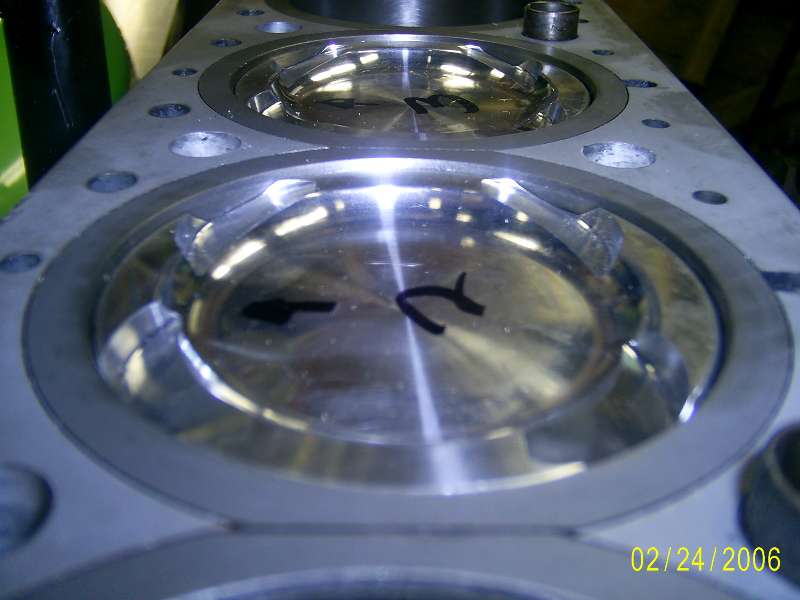 |
Cams I should use?
Some bikes have a lot of cam options. For STREET bikes, pick the mildest cams you have availible. This will not give you the best peak power. If you want that, use some aggressive cams with a large turbo. But it'll be a real dog off boost. For street though, mild stock cams will give you the best all-around performance and you lose little at high RPM. Its a very fair exchange in my opinion.
If you want to experiment with it, by all means, try the bigger cams. But other than all-out racing bikes, mild cams are best for drivability
Boost I can get away with?
This is similar to the question of compression ratio. Its not a fine science, its a bit of a guess. Its a combination of the compression ratio, ignition timing, engine build, ambient temps, intake temps (intercooler, water injection) octane of the fuel etc etc.
Simply put, there's no good answers. I like to run 16psi on 91 octane gas. Its a risky boost to run though. I retard my ignition 8 degree's and my compression ratio is 2 points lower than stock. I use forged pistons. I have good luck with this formula, but its far from set in stone, and you need to play it by ear and be cautious. A dead stock engine can probably get away with 6psi on pump gas, but it really depends on the engine.
Be careful, is the phrase of the day. Or this will Happen:
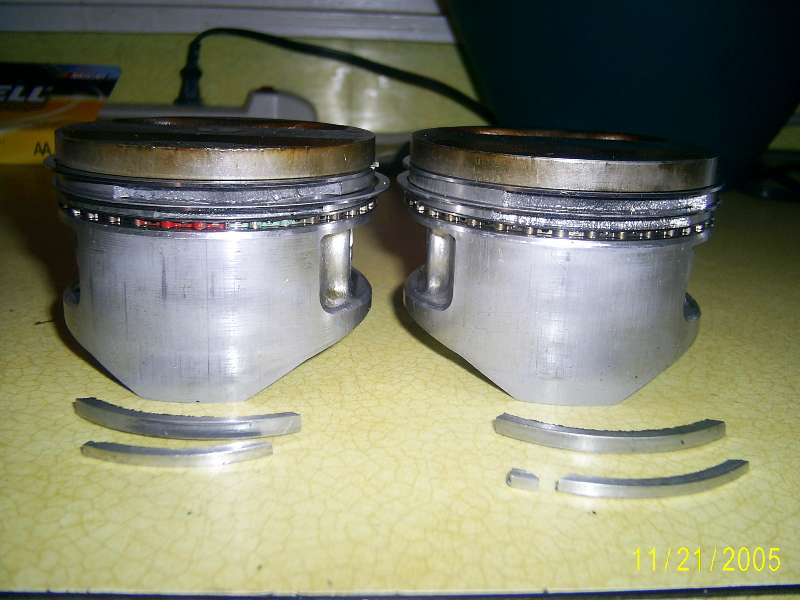 |
Turbo Sizing?
This is a very very complex subject. I have some simplistic ways to help you pick the best turbo, but keep in mind, I'm not even touching the scope of it.
The biggest two factors on turbo's is 1) peak HP capability and 2) spool time.
Peak HP capability is mostly determined by the compressor wheel, and most turbo's offer a compressor map that can be translated into a HP capability number. There's a bit of guessing with this but you can make some comparable numbers either way.
So the very first thing you need to determine is: what is the peak amount of HP you will ever dream of making realistically?
This is a very important question, because the bigger the turbo you choose, the slower it will spool. So if you dream really big on this, you will necessitate a really big turbo that will spool like a stick in mud.
Compare it to your stock bike HP. For example, if your stock bike makes 100HP. A realistic goal would be 200hp. Thats roughly 15psi worth of boost if everythings working well, and it would spool pretty quickly.
Now if you want 300hp, that would require 30psi, and it would spool slowly, and you'd need a pretty special turbo to run that much boost efficiently.
Its definitely possible, but its not realistic and definitely would never be seen on pump gas.
The other portion is spool time. For simplicity, I'll simply say its all about the size of the turbo.
You can't have a 300 hp turbo and expect it to make 10psi at 2000 RPM's. Its either or. If you want really fast spool, you have to limit your peak HP capability.
I personally recommend, just for turbo-overspeeding, never use a turbo that is less than double the HP of your stock engine. This might need to be adjusted if your engine has been modified drastically. The reason is you might be going outside of the efficiency range at the higher RPM's otherwise, even at low boost you could go too far outside of the efficiency of the turbo and create high intake temps, and thereby, detonation. Not a good situaton
Again, this is a simplstic example of turbo choices. But if you follow it, it'll rarely let you down. For more info, there is lots of info out there that go into the formulas involved in turbo's and its very complex. I just wanted to offer some simpler advice on it that didn't seem intimidating
Intercoolers?
Intercoolers are definitely worth the effort, assuming you can find
a good place for one, and have room for one that is the proper size.
First, intercoolers job in life is to reduce intake temps. Simple as that. They do this by using ambient air flow over them to transfer the heat, just like a radiator. A properly sized intercooler, with proper flow will have as high as 70% efficiency.
The size of the intercooler is a big question. Many think its determined by teh HP you plan on running and that isn't true. Its the CFM you plan on running that matters, which is NOT the same as the HP!
This is another complex subject, and I won't go into it deeply, but basically check this website for CFM vs cross section of intercoolers to get an idea of what size you need. Take your stock engine, or NA HP, and convert it to CFM. IE, 100hp = 160 CFM. Find the friendliest shaped intercooler core that surpasses that CFM, and you have the cross section that best suits your purposes. www.bellintercoolers.com
I'll try to go into more details on this subject later, because I know it is an often contested subject
Water Injection?
Water injection is an effective method for adding to an intercooler,
or acting as an intercooler by itself. The problems with it is its bulky
on a bike, and its limited. If you run out of water, you can blow up
your motor.
There are very simplistic, cheap ways of setting up water injection. A simple pump, nozzles, and a boost switch is all that is needed. The more complex methods use one injector (or more) and meter the amount based off of variables. These are spendy of course.
The simple option can be purchased with generic parts for around $200. The more exensive options start around $800 and go up from there.
I say "water" injection, but there is usually alcohol involved. Some use pure alcohol with no water. Some use a 50/50 mix. From the reading I've done on it, 50/50 is the best compromise, although there is definitely advantages to pure alcohol.
I only briefly touch on this because its not a prefered method for me, although I have played with it. I blew up an engine after running out of water and it soured me to the option, but that was my own fault. It worked great otherwise.
Pipe Diameter?
Another very common question is what pipe diameters to run?
There is no simple answer to this either, although I will use a simplistic rule "smaller than you think is necessary". Most people want to go big on the pipe, and there is nothing wrong with that. Going too big on the pipe, for the most part, isn't a huge negative.
The only situation I stress on this is exhaust header pipes. IE primary pipes. Go small. Very small. I've played with different sizes and have never ran into a small pipe that was *too* small. Regardless to HP!
Just my opinion as always, but even the biggest, baddest 1000 hp bike, I wouldn't run bigger than 1.5" primaries. I have experimented with pipes as small as .8" ID and found no notable disadvantage. I normally run 1.125" ID pipes, simply because they are easily purchased in my area.
Cold pipes, I base my size off of the turbo outlet. If the outlet size is 1.5", then step it up to 1.75" just to play it safe, but that'll be more than enough.
The only exception to this rule would be the exhaust pipe, assuming you run more than a dump pipe. There is no such thing as too big in that catagory. I run at LEAST 2" on all my systems, preferably 2.5", and even then I'll run dual 2.5" if I can work it into the system.
Any back pressure after the turbo is robbing the turbo efficiency. Every single quarter of psi is lost hp. So make it as absolutely free flowing as possible.
Header Types?
The two biggest types of headers used is "log manifolds" and normal headers types. Log manifolds have the different cylinders feed into a common log at indirect angles, and usually have the turbo feed at another indirect angle. Where as the normal header type will look more like a stock header with a collector conforming with the flow anges into one outlet, that then feeds directly into the turbo.
There is no question that the latter is better. But its not a huge difference. If you don't have the fabrication cability, or the realistate to make a nice collector, don't stress it. It'll still spool just fine. Your effeciency might be slightly lacking, it might spool slightly slower, but it'll be slight.
Always try to make things flow into each other as smoothly as possible, but if you have to make a hard transition, don't let it keep you up at night. It'll still work just fine.
Here is a Log manifold (first manifold I ever made):
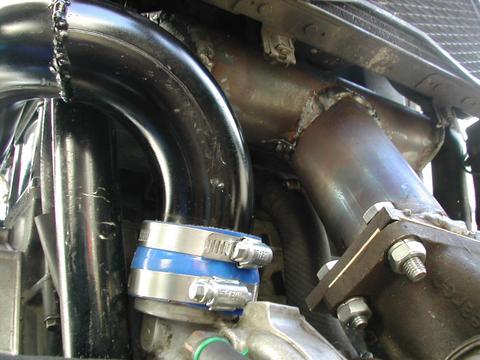 |
 |
Intake Plenum Size?
This is especially important with carb blow thru and low cylinder count. The less cylinders you're playing with, the bigger the intake box needs to be.
The formula I've found to be, at LEAST 4:1 with a single cylinder. At LEAST 1:1 for a 4 cylinder. You can draw lines between them.
The ratio is the volume of the "air box" vs the displacement of the engine. In other words, if you have a 400cc single engine, you want at the very least 1.6L of air box volume. I'd recommend over 2L personally
The more cylinders you have, the less issue it is, because the pulses are closer together and this tones down the disruption of the intake. 4 cylinders are pretty forgiving on small air boxes, but again, the bigger the better.
There really is no disadvantage on too big of a box. If you have the room, make it BIG!!! As big as you can get away with. Otherwise you'll have tuning issues, I promise you (if you go too small).
Boost Controllers?
There is a variety of boost controllers availible. They fall into two catagories. Air bleeds and spring-and-ball valves. Air bleeds simply bleed off pressure to atmosphere. A metered leak. These work fine, but they don't limit the reference pressure accessing the waste gate actuator. So they don't prevent wastegate fluttering at all.
Spring-and-ball completely shut off access to the waste gate until you blow past the spring at whatever its set at. This greatly reduces wastegate fluttering, and can make the turbo spool MUCH harder. I always recommend these over the air bleed style boost controllers.
Fuel Pump and Fuel Pressure Regulator?
Which ones to use? A common question also.
The short answer is: Mallory 4309 and MSD 2225. Total around $180.
you have to have a fuel pump that can feed at LEAST 3 psi over your peak boost number. Otherwise the boost pressure will prevent the fuel from entering the float bowl.
You have to have regulator that has a boost reference, so increases fuel pressure as boost increases, otherwise, the boost will prevent fuel from entering the float bowls.
The fuel pressure regulator (FPR from here on) is a 3 port regulator with a return line. It adds complexity to the fuel system, but is by far the best way to meter the fuel. You have to add a return line bung to the tank. Sucks, but its worth while.
The fuel pump is a EFI fuel pump. has a 100+psi capability. Overkill you might say? Yes it is. But its small, cheap, low amperage (4.5 amps dead head) and light weight, and the regulator will regulate the pressure to any boost setting you will ever dream of, and it flows way more than you'll likely use.
There is few situations that would not work with these two components. All the way from 30hp to 300+hp. Its all Good. (over 300HP, I'm not sure how effective the pump is. I've never played with that HP rating)
Float level and base fuel pressure
I tie these two together for a reason. They relate to each other in
a very important manner. The fuel level in the float bowls is directly
related to the base fuel pressure.
The reason why is, the more base pressure you have, the more pressure you have on the float valve. This creates a situation where the higher the base pressure, the higher the float bowl fuel level.
This is very very important to understand, because float bowl fuel level drastically effects jetting, especially low RPM throttle transition. Its a very easily overlooked issue and can have a huge effect on many aspects of jetting a carberator. ANY carberator!
To start off, I always recommend adjusting the float height of whatever carb(s) you are playing with, at least 2mm lower before you even start. This is in anticipation of the fuel pressure pushing on the floats. You may have to go lower. You can always check your fuel level, but that won't necessarily show you the transition effects. Sometimes you need to adjust it to compensate for overly rich or lean (much more likely rich) situations
I recommend 2-3psi base pressure. Its a good base number that offers good higher boost fuel flow to prevent the bowls from running dry. IF you decide to play with the base pressures later, keep in mind that it effects the float level, and can change all the jetting parameters across the board!!
This is really crucial for jetting carbs for blow thru, and if you don't understand this fundimental part, you'll never get the jetting quite right. Base fuel pressure = float height. Write that down!
fuel line restrictions
This mainly pertains to quick disconnects.
Quick Disconnects (QD's) are VERY restrictive and should be avoided. Many fuel delivery issues are completely due to these devices.
If you are going to put them anywhere in the system, I would recommend they be between the FPR and the carbs. The reason being, the pressure drop will be after the FPR, so it won't effect the pressure upto the carbs. Of course, if the QD is too restrictive, it could still cause problems, but it will be a lot less likely.
The other issue is the return line from the FPR. You want it to be *extremely* unrestrictive. There should be no adapters, QD's, transitions, hard angles, or anything at all, that could add restriction. You should also use the largest line you can get away with for it, and you should mount the FPR as close to the tank outlet as you can
If it seems like I'm being a bit silly, good. Its because the return line for the FPR is very important, and any issues with it, effects everything in the fuel system. Optimally, you know the return line is working well when you can turn down the fuel pressure to 0psi. If you can't do that, then the return line is the problem and it should be addressed.
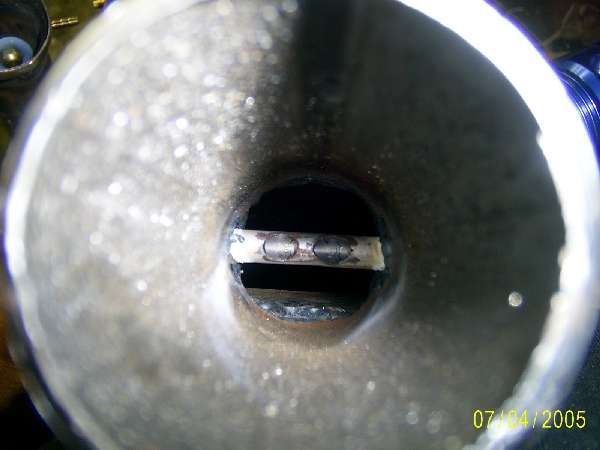 |
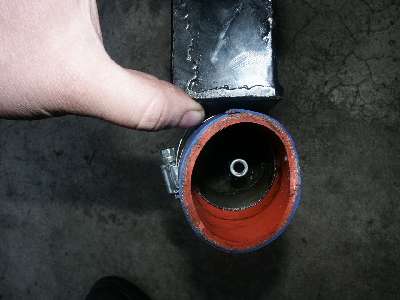 |
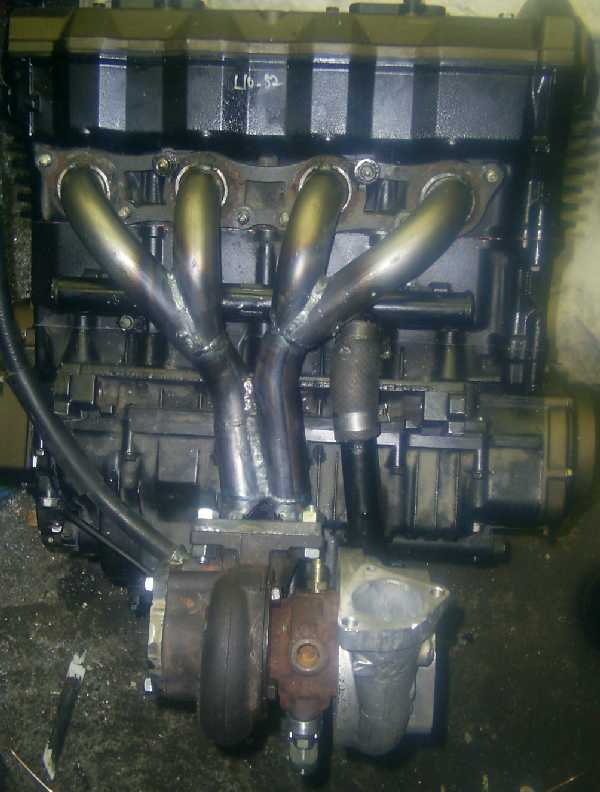 |